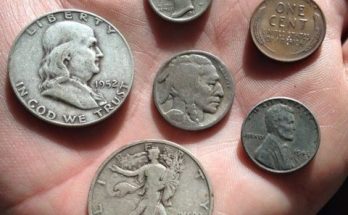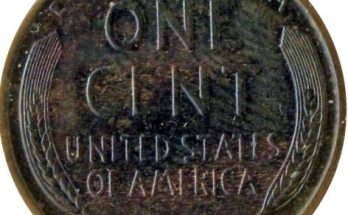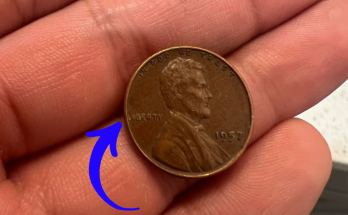A 1935 dollar bill may be a small deal to you. But if that dollar bill includes a few key markings, it may be worth more than its face value.
Some 1935 dollar bills have sold for tens of thousands of dollars.
Knowing its value and distinctions are vital to capitalizing on rare dollar bills.
To truly understand why specific 1935 one-dollar bills are valued so high, we have to look at its history and changes from the previous 1934 issue.
Little-Known Facts About 1935 Singles –
Some U.S. citizens had issues with the Fourth Coinage Act and the gold standard. As a result, Silver Certificates were issued and redeemable for silver dollar coins and silver bullion.
More than 38 billion one-dollar silver certificates were printed by the U.S. Government. After the 1935 silver certificate, it wouldn’t be until 1953 that another series would be released in $1 denominations.
A 1935 silver certificate Star Note in Grade 67 is valued at about $1,000. In Grade 66, values are roughly $500.
The most valuable 1935 error silver certificate sold for over $8,200. The error note has an additional overprint with a BEP Rejection Mark.
The Hawaii Note from 1935 is valued at $2,000 in excellent condition. A North African Silver Certificate sold for nearly $2,200 in MS64-graded condition.
History of the $1 Bill
Before 1928, all U.S. currency was printed in large size, with 7 3/8″ x 3 1/8″ dimensions.
In 1928, small-size notes were issued with dimensions of 6.14 inches x 2.61 inches.
The 1935 U.S. one-dollar bill was the first of its kind after changing its look from the 1934 dollar bill.
Both were paper money, but the 1934 version still featured something from the 1928 silver certificate that wasn’t desirable.
This was called “The Funny Back Design.”

The Funnyback or Funny Back features a unique design on the back of the bill that displays the word “ONE” in a huge font, unlike any other writing on the bill.
The president’s portrait on the other side was of George Washington.
But both 1928 and 1934 silver certificate bills are considered funny backs. And both versions are not worth more than their face value.
But the 1935 dollar bill changed that when they altered the design.
Beginning of the 1935 One Dollar Bill
The first noticeable difference was the changes to the back of the bill. The face still featured President George Washington.
The only change to the front of the bill was a numerical “1” placed to the left of Washington.
However, the back of the bill went under some design changes.
Reverse Design
This particular dollar bill within the U.S. Currency featured what is known as the “All Seeing Eye” that sat at the top of a pyramid on the left side of the “ONE.”
And to the right of the printed “ONE” was the Great Seal.
The Great Seal and The Blue Seal
The Blue Seal is commonly interchanged with the Great Seal, showing that it was a Silver Certificate.
Since these notes were issued during The Great Depression and under difficult circumstances in the economy, silver certificate holders had rights to redeemed for actual silver coins or silver bullion.
Then, an Act of Congress discontinued the redemption rule in 1963.


What Makes the 1935 Dollar Bill So Valuable?
What makes the dollar bill worth anything?
Well, that’s a more extended discussion, but a significant factor is the note certifies there is silver on deposit in the Treasury, guaranteed by the United States.
What makes one dollar bill more valuable than another dollar bill? That’s a more straightforward discussion.
The 1935 one-dollar silver certificate ended up having several varieties printed at once.
To find its value, first, you should identify the bill series of the money.
How Much Is A 1935 $1 Bill and Its Varieties Worth?
The seals on the dollar bill often indicate what that bill was valued for. The silver certificates featured the Silver or blue seal.
And in the old days, because you could exchange them for silver coins, some people cut them in half to make change.
The paper certificate could tear easily, so they ripped them in two.
The North Africa 1935 Dollar Bill and The Hawaii 1935 Dollar Bill had different seals and would be two notable distinctions of the series.
North Africa 1935 $1 Bill
North African notes were distinguishable due to their yellow seal compared to other varieties.
The North African stamped notes were issued for commerce and business for trade to the U.S. military during World War II.
144,000 North Africa star notes were printed and now sell for over $1,500 each in MS 63 grade.
North African 1935 Bill Value
In uncirculated condition, the North Africa 1935 dollar bill has sold for a few thousand dollars.
If they were to have a C grade on the Sheldon scale, this could stand for two things.
The first was “Choice,” and the second was “Crisp.”

The Hawaii 1935 $1 Bill
The Hawaii 1935 Dollar Bill was issued after Pearl Harbor and during WWII.
They didn’t have blue or yellow seals but instead had a brown seal or a red seal on the note.
There’s one theory on why Hawaii notes were printed.
If Japan invaded Hawaii and confiscated U.S. currency, the U.S. government could declare all 1935 dollar bills with a Hawaii stamp invalid for cash or to finance investment.

While it isn’t among the most popular vintage collector’s items, auction listings are between $500 and $1,000 in great condition.
Over 200,000-star notes with the Hawaii stamp were produced and can bring a price of up to $2,000 in MS 63 grade in the auction market.

The 1935A Series
Notes of any value have to be signed by The Secretary of the Treasury.
In 1935 this happened to be Henry Morgenthau Jr. and Treasurer W.A. Julian.
It’s common for an entirely new bill design to come out. But when a term ends and a new Secretary of Treasury takes over in Washington D.C., the signature changes and slight designs are also made on the bill.
But in 1935, they were only minor.

First came the 1935 A series, which features changes in the font size on the bill.
The plate numbers on the back and face of the bill were incorrectly measured, dating back to the 1928 funny back.
They were a ½ millimeter to a whole millimeter too small.
The result was enlarging the plate numbers to be readable without a magnifying glass.



